-
Kathmandu, Nepal
-
Hotel, Lodge, Tea House, Tent
-
Private Car/Bus
-
Difficult
-
Full board while on trekking
-
Expedition
-
8-10 Pax
-
8167m
Overview
Introduction
The seventh highest mountain in the world “Mt. Dhaulagiri” is 8167m in height. In Sanskrit Dhaula means white, beautiful and giri meaning mountain. t was discovered by the westerns in 1808. Unknowingly, it was counted as the highest mountain before the discovery of Mt. Kanchenjunga. It was first climbed on May 13, 1960 by a Swiss/Austrian/Nepali expedition.
The Dhaulagiri massif extends 120 km (70 mi) from the Kaligandaki River west to the Bheri. There are more than six different routes to climb Dhaulagiri. The normal climbing route is considered a reasonable climb with only short technical climbing sections and moderate avalanche danger. The South and West faces of Dhaulagiri both feature massive drops; each rises over 4000 meters from its base, and each has been the site of epic climbs. The tangled topography of twisting ridges, glaciers, and ice falls is crested by a stretch of thirty miles. Several pyramid-shaped peaks rise along the main crest. Four of the summits, numbered form east to west, rise above 25,000 feet.
Autumn Outline Itinerary
06 SEPTEMBER: DAY 01: Arrival in Kathmandu and transfer to the hotel
07 SEPTEMBER: DAY 02: Expedition Document Application, Preparation, and Briefing for Expedition
08 SEPTEMBER: DAY 03: DRIVE TO BENI
09 SEPTEMBER: DAY 04: Trek to Tatopani
10 SEPTEMBER: DAY 05: Trek to Ghasa
11 SEPTEMBER: DAY 06: Trek to Marpha
12 SEPTEMBER: DAY 07: Rest at Marpha
13 SEPTEMBER: DAY 08: Trek to Yak Kharka
14 SEPTEMBER: DAY 09: Trek to French Col
15 SEPTEMBER: DAY 10: Trek to Dhaulagiri Base Camp
16 SEPTEMBER–18 OCTOBER: DAY 11–43: CLIMBING PERIOD OF MT. DHAULAGIRI
19 October: Day 44: Trek to Dhampus Col
20 OCTOBER: DAY 45: Trek to Marpha
21 OCTOBER: DAY 46: Trek to Jomsom
22 OCTOBER: DAY 47: Fly to Pokhara
23 OCTOBER: DAY 48: Rest and Relax in Pokhara
24 OCTOBER: DAY 49: Fly to Kathmandu
25 OCTOBER: DAY 50: Expedition ends, farewell, and departure.
Spring Outline Itinerary
08 APRIL: DAY 01: Arrival in Kathmandu and transfer to the hotel
09 APRIL: DAY 02: Expedition Document Application, Preparation, and Briefing for Expedition
10 APRIL: DAY 03: Drive to Beni
11 APRIL: DAY 04: Trek to Tatopani
12 APRIL: DAY 05: Trek to Ghasa
13 APRIL: DAY 06: Trek to Marpha
14 APRIL: DAY 07: Rest at Marpha
15 APRIL: DAY 08: Trek to Yak Kharka
16 APRIL: DAY 09: Trek to French Col
17 APRIL: DAY 10: Trek to Dhaulagiri Base Camp
18 APRIL–20 MAY: DAY 11–43: CLIMBING PERIOD OF MT. DHAULAGIRI
21 MAY: DAY 44: Trek to Dhampus Col.
22 MAY: DAY 45: Trek to Marpha
23 MAY: DAY 46: Trek to Jomsom
24 MAY: DAY 47: Fly to Pokhara
25 MAY: DAY 48: Rest and Relax in Pokhara
26 MAY: DAY 49: FLY TO KATHMANDU
27 MAY: DAY 50: Departure from Kathmandu
Trip Highlights
- Dhaulagiri Normal climbing route is via Northeast Ridge, the route first used and climbed by Swiss-Austrian expedition in 1960. The Advance Base Camp is established at 5,300m and above there can be 3-4 camps.
- Camp 1: First camp will be established at 5,900m on the Col east from the ABC.
- Camp 2: Second camp will be established at 6,400m, reached with some steep climbing sections from camp 1.
- Camp 3: Third camp is located at 7200m west with steep ice and snow climbing. From Camp 3, climb towards the East Ridge, where more often we’ll experience strong wind conditions before reaching camp 4 (7500m). This is the most difficult part of the climb.
- Camp 4: From camp 4, if weather and condition favor us, we make direct push for the summit and return to camp 3. In difficult conditions the fallback is to setup bevy at 7,900m in order to attempt another summit push next day.

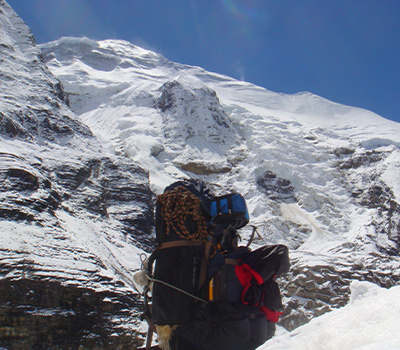
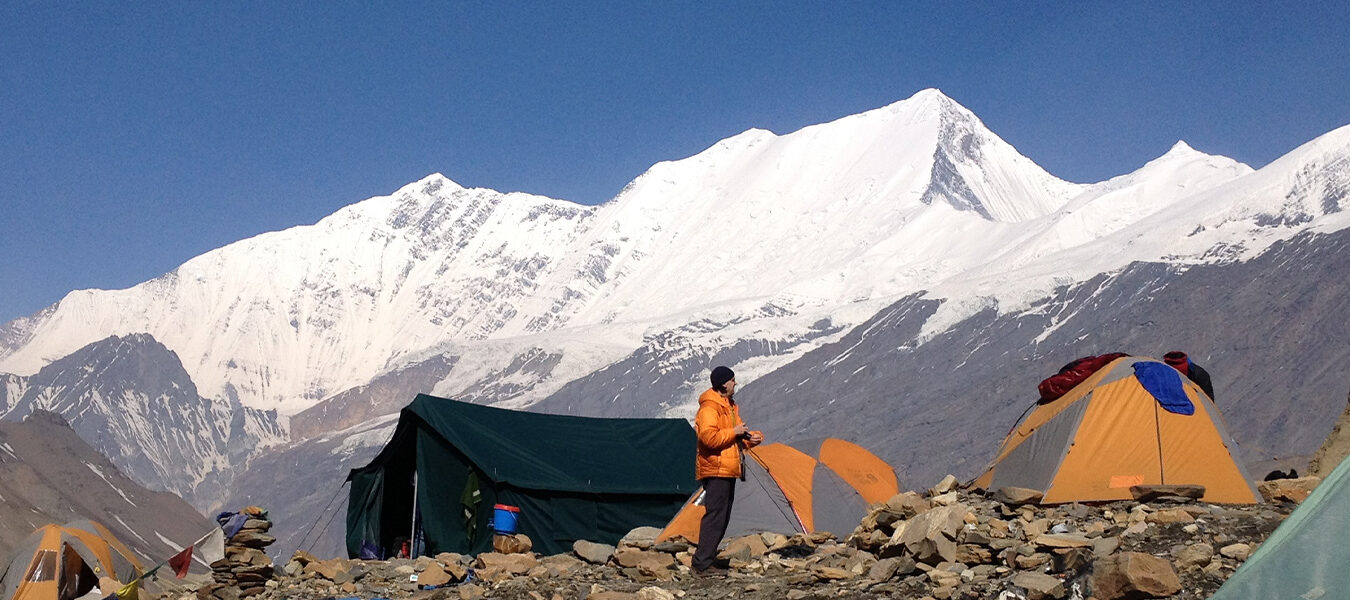
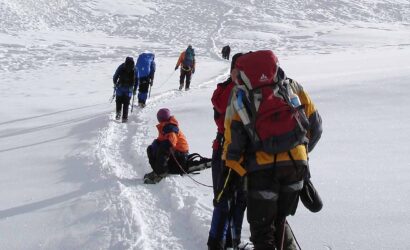
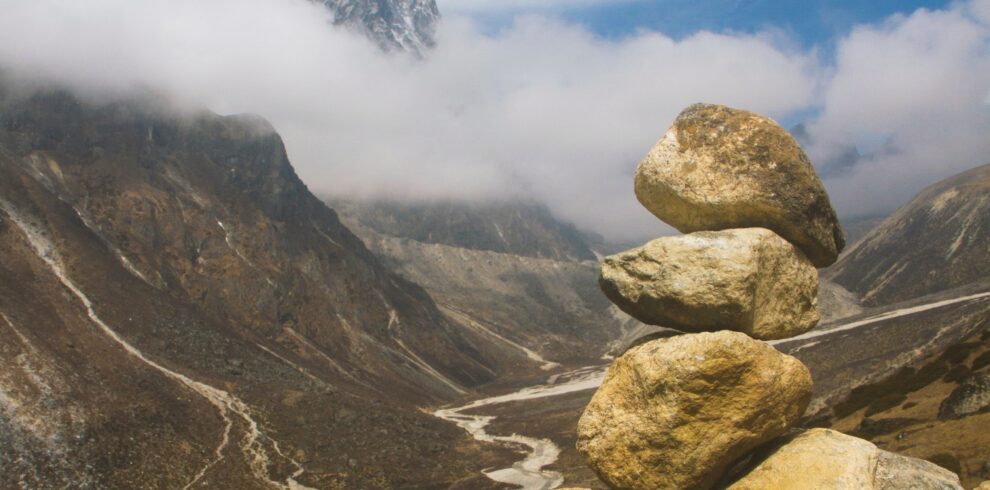
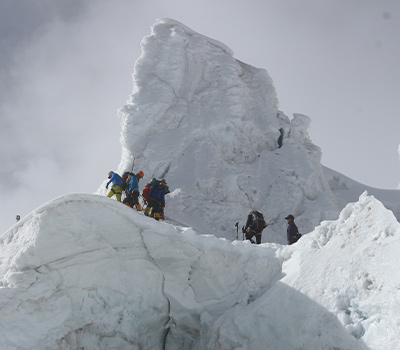
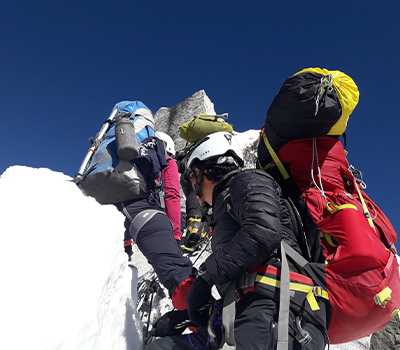
Write a Review